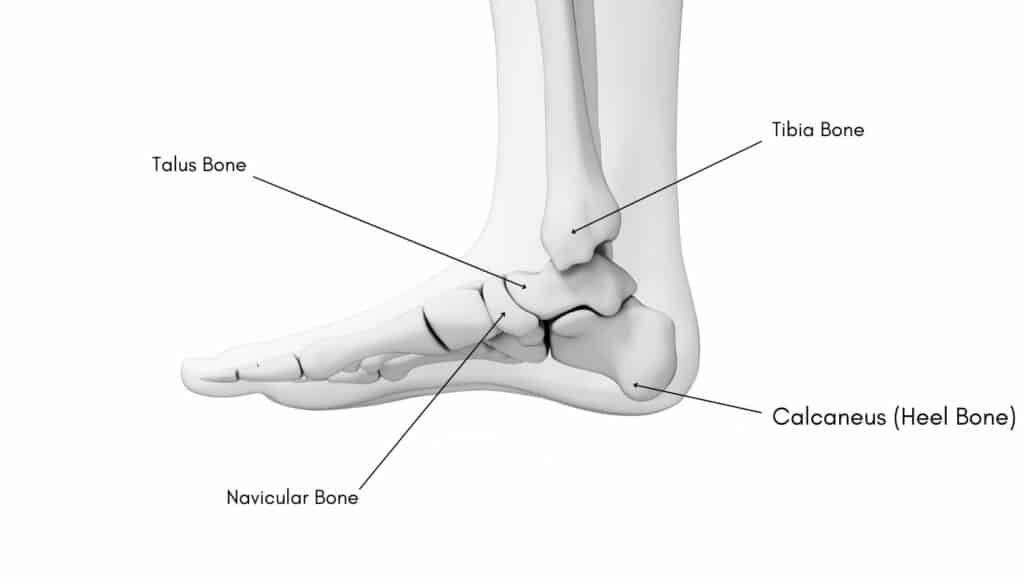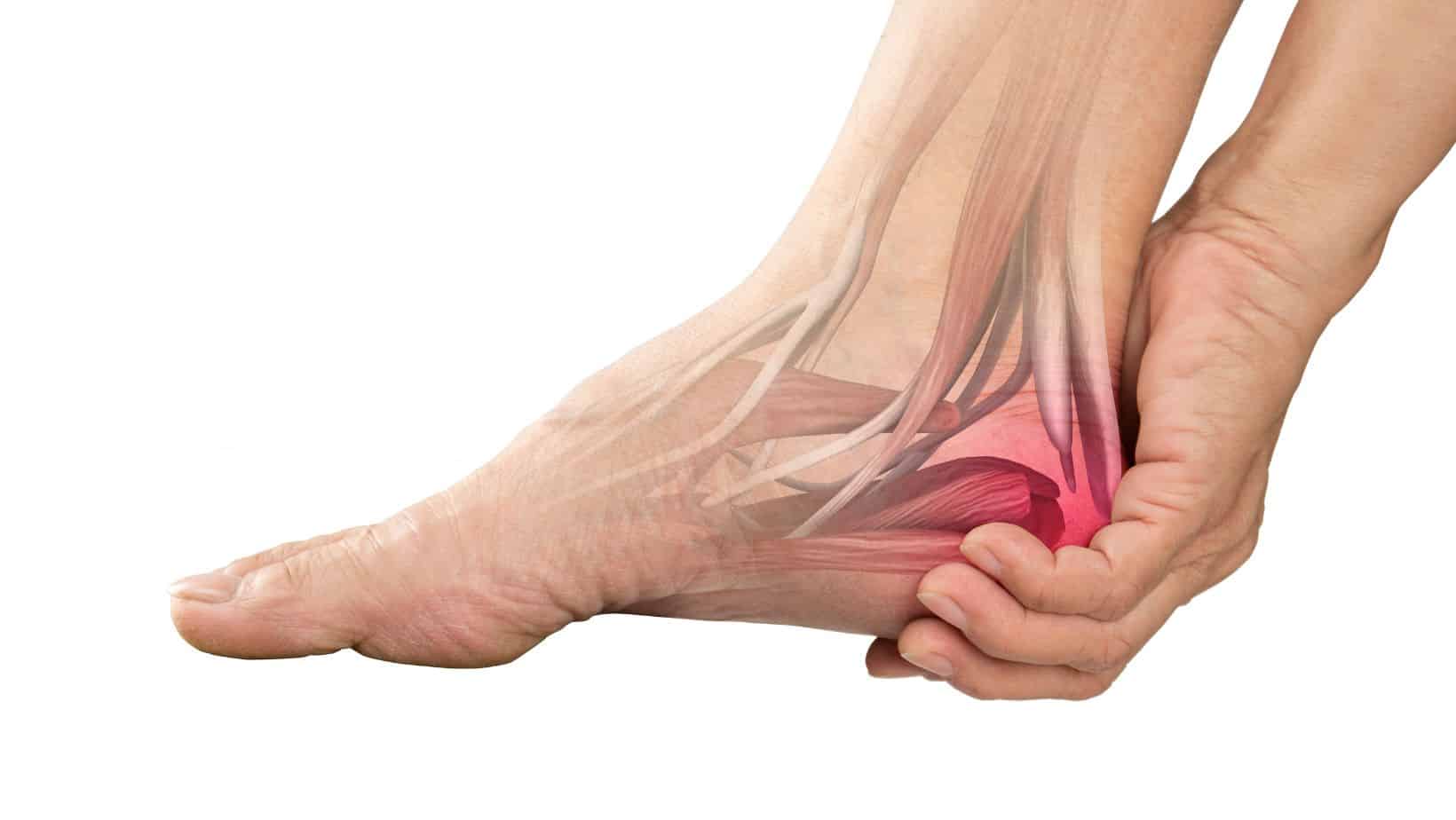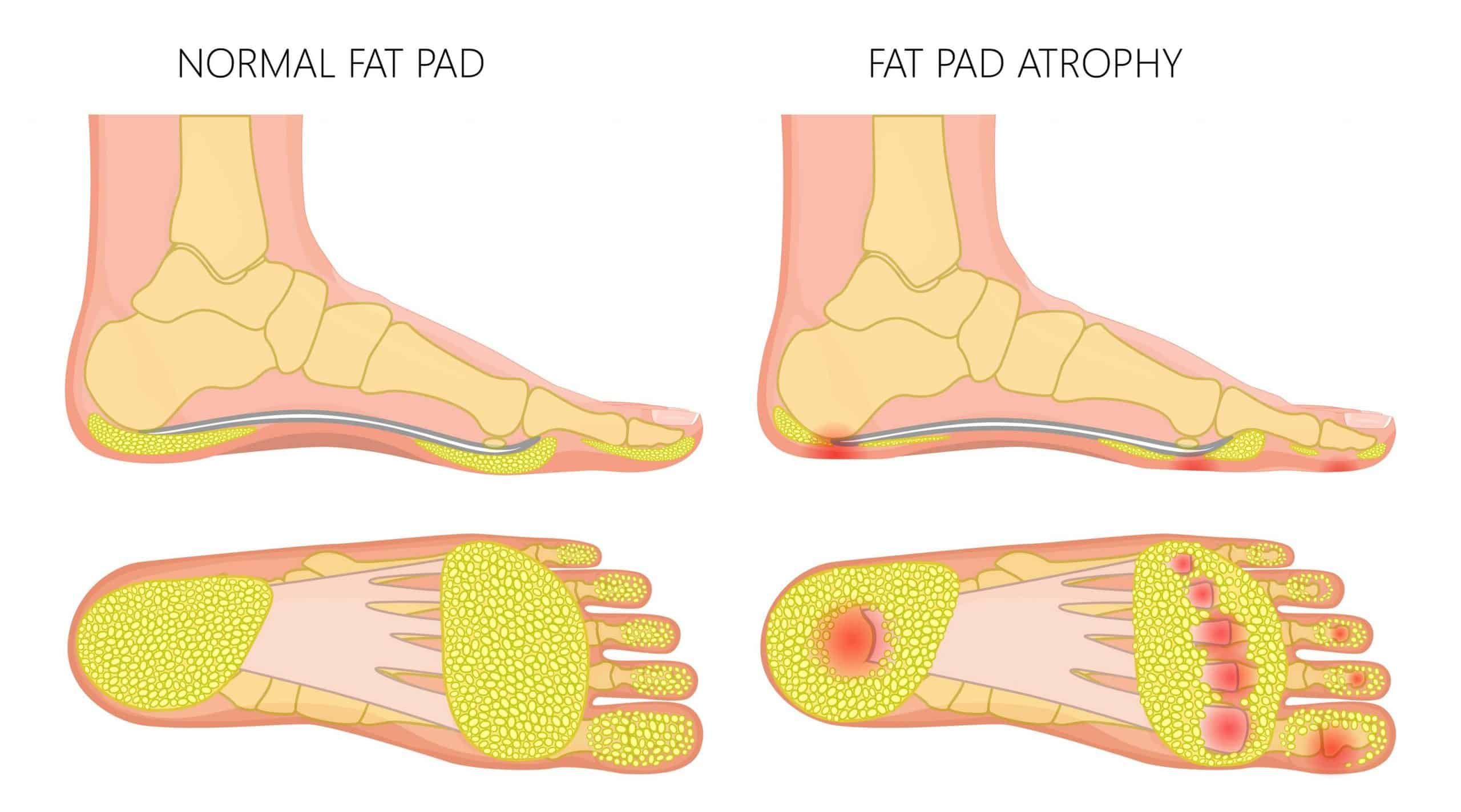Plantar Fasciitis
Read More >
A bruised heel is the consequence of trauma to the fat pad, which cushions the heel bone or from direct bruising to the heel bone.
On the underside of the Heel Bone (Calcaneus) are fat pads whose primary function is to provide cushioning from impact to the underside of the foot. The fat pads of the heel look similar to adipose tissue that you find in your abdominals, but nerves highly innervate them; they have a rich blood flow and are not influenced by BMI. If the heel fat pad becomes overloaded or high force is applied to them, it can result in inflammation of the Fat Pad and a Bruised Heel, also known as a Policeman’s Heel or a Runner’s Heel.


The primary symptoms of a Bruised Heel are pain and tenderness under the heel when standing, walking or when placing direct pressure on the plantar surface of the heel bone.
Patients can feel a dull ache on their heel when standing, which is worse when standing barefoot on a hard surface such as kitchen tiles, while symptoms improve in non-weight-bearing positions.
Impact activities such as running or jumping can aggravate the symptoms of a Bruised Heel, as can wearing minimalist shoes or flip-flops.
A Bruised Heel is caused by a fall, slow progressive overload or Fat Pad Atrophy.
A fall or heavy impact places direct pressure on the fat pad and causes an immediate onset of pain, inflammation and swelling to the heel fat pad resulting in exquisite tenderness to the touch.
A slow progressive overload resulting in a Bruised Heel can be caused by poor footwear, inadequate support, flat feet, or biomechanical factors in a person’s gait pattern.
Fat Pad Atrophy is the wearing down of the Heel Fat Pad, which can occur innocuously and results in less padding around the Calcaneus bone and a Bruised Heel.

A diagnosis of a Bruised Heel can be achieved by a Physical Therapist, Sports Doctor or Podiatrist following a clinical interview and physical examination. If the clinician remains uncertain of the diagnosis, they may refer you for an Ultrasound scan or an MRI, as this can show inflammation of the fat pad, fat pad atrophy and swelling around the heel.
An X-ray can identify bruising of the heel bone but cannot identify changes to the soft tissue structure around the heel bone.
These scans are also helpful in ruling out other conditions that have similar symptoms to a Bruised Heel, such as:
Home treatment for a Bruised Heel includes ice, anti-inflammatories such as Ibuprofen, rest and cushioned footwear. If this is unsuccessful, it is recommended to seek care from a Physical Therapist or a Podiatrist.
Physical Therapy can include soft tissue massage to relax the surrounding muscles and joint mobilisations to optimise ankle joint mobility.
A gait analysis can identify any biomechanical factors contributing to the causes of your bruised heel and result in recommendations for footwear and the necessity for insoles.
Cushioned insoles or a cushion heel pad are highly effective forms of treatment as they provide extra cushioning to absorb impact while walking or running. A low-profile running shoe reduces the impact on heel striking, with a 5mm heel drop or less being the most beneficial.
Taping is a valuable treatment for a Bruised Heel as it bunches the Fat Pad together to provide additional cushioning directly under the heel bone for pain relief.
Strengthening, balance and flexibility exercises are beneficial in addressing any factors that may be causing an overload to a bruised heel and these should be included in your rehabilitation protocol.
Steroid injections are best avoided for a bruised heel as they can cause Fat Pad Atrophy. While some surgical options involve adipose grafts from elsewhere in the body to the heel, there are mixed results and the benefits are often short-lived.
How do I know if my heel is bruised or broken?
The symptoms of a bruised heel and a broken heel are very similar, and there is no clinical test to identify if your heel is bruised or broken, so an x-ray is required to identify the difference.
How long does a Bruised Heel take to heal?
In our clinical experience, a Bruised Heel takes 2-4 weeks to heal if it is managed correctly. However, if you continue to aggravate a Bruised Heel by carrying out impact activities, the symptoms can persist and last up to 12 weeks.
What is Runners Heel?
Runners’s Heel is an alternative name for a Bruised heel which is the result of repetitive impact to the Fat Pad of the heel bone, causing pain and inflammation to the heel fat pad.
Can a Bruised Heel get worse?
Yes, if you continue to stand, walk or carry out impact activity, the symptoms of a Bruised Heel will likely get worse.
What can you do for a Bruised Heel?
In our experience, the best thing that you can do for a bruised heel is to reduce the amount of time on your feet, wear cushioned trainers, ice your heel for pain relief and avoid impact activity. A bruised heel causes inflammation of the tissues around the heel so reducing the time on your feet allows the area time to heal while cushioned trainers protect the heel from impact when walking or standing.
This is not medical advice. We recommend a consultation with a medical professional such as James McCormack. He offers Online Physiotherapy Appointments weekly.
Related Article: Fat Pad Atrophy: Symptoms and Treatment